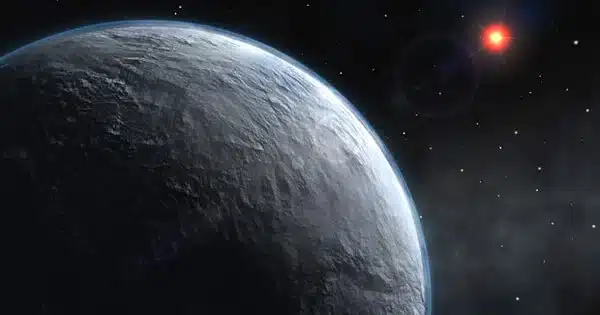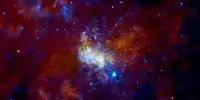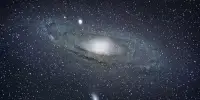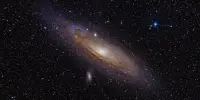TESS has discovered and authenticated two of the longest-period exoplanets discovered to date. These long-period big exoplanets orbit a K dwarf star and are part of a class of planets known as warm Jupiters, which have orbital periods ranging from 10-200 days and are at least six times the size of Earth. This remarkable discovery opens up interesting possibilities for future research into long-period planets similar to those in our own solar system.
TESS has spotted and authenticated two of the longest-period exoplanets discovered to date, according to researchers from the University of New Mexico (UNM) and the Massachusetts Institute of Technology (MIT). These long period big exoplanets orbit a K dwarf star and are part of a class of planets known as warm Jupiters, which have orbital periods ranging from 10-200 days and are at least six times the size of Earth. This remarkable discovery opens up interesting possibilities for future research into long-period planets similar to those in our own solar system.
The study, titled TOI-4600 b and c: Two long-period giant planets orbiting an early K dwarf, will be published in a future issue of The Astrophysical Journal Letters. The exoplanets, TOI-4600 b and c, were discovered using photometric data from the Transiting Exoplanet Survey Satellite (TESS) and confirmed using ground-based telescopes since they had higher resolution.
The main thing is trying to uncover more about planet formation because based on what we know about the exoplanets we found, so far, nothing really looks like the solar system. The interesting thing is that we want to learn about this planet’s formation. We have over 5,000 exoplanets now, but none of these systems really look like the solar system.
Ismael Mireles
NASA’s TESS observation approach, which divides each hemisphere into 13 sectors that are examined for around 28 days, produces the most thorough all-sky search for transiting planets. This method has already demonstrated its ability to discover both huge and small planets orbiting various stars. In the case of TOI-4600, the star is a K dwarf star, also known as an orange dwarf, which are stars slightly smaller and cooler than the Sun.
To be found with the correct period by the Science Processing Operations Center (SPOC) pipeline and the Quick Look Pipeline (QLP), which search the 2-minute and 30-minute cadence TESS data, exoplanets must transit their host stars at least twice within TESS’s observing scope. Due to the fact that 74 percent of TESS’ entire sky coverage is only studied for 28 days, the bulk of TESS exoplanets discovered have durations of less than 40 days. As a result, the 82.69-day, or nearly 3-month, period of TOI-4600 b and the 482.82-day, or 16-month, duration of TOI-4600 c make their discoveries much more valuable.
The University of New Mexico’s Ismael Mireles, the lead author of the paper, along with collaborators including Diana Dragomir, an assistant professor in UNM’s Department of Physics and Astronomy, and collaborators from Massachusetts Institute of Technology and the University of Bern, analyzed the data in order to measure the periods and sizes of these planets.
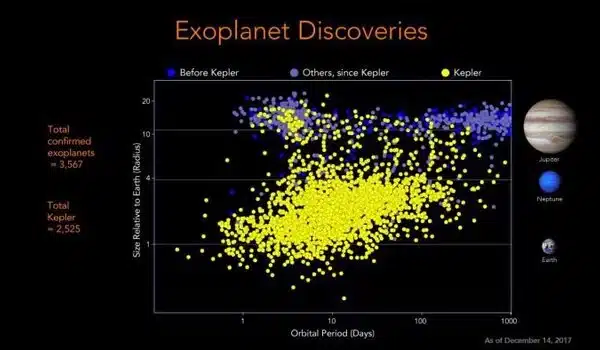
Mireles and his colleagues had to validate that the transits were caused by planets and figure out which star was sending the signal. TESS diagnostic tools revealed that the signals emanating from the target spot were accurate. They spotted and watched a transit happen with the help of TESS-Follow-up Observing Program (TFOP) Subgroup 1 (SG1), a global network of professional and amateur astronomers with access to telescopes small and large, proving for the researchers that this planet is truly on target. The masses and diameters of the planets were another element that Mireles and his team had to consider. In order to achieve this they substituted the velocity measurements to observe how much the host star wobbles because the host star will pull on the planet.
“When we got the measurements, we were seeing very little movement in the target star. So when you start, you could be responsible for what we were seeing. Those two things together pretty much ruled it out. At that point we were sure that we had two planets,” Mireles stated.
The astronomers discovered these two planets, and the inner planet TOI-4600 b has a radius that is just under seven times that of Earth. It is roughly the size of Neptune or Saturn. TOI-4600 b has an estimated temperature of roughly 170 degrees Fahrenheit, which is hot but colder than many of the planets discovered by scientists. TOI-4600 c, the second discovered planet, has a radius around nine and a half times that of Earth, making it roughly Saturn-sized. It only transited once the first time TESS saw the star before transiting again nearly three years later.
“Once you have two transits, you have an idea of what the periods can be. It could be the 965 days separating them, half of that, a third, a quarter, etc. The shorter periods could be ruled out because TESS had observed the star for a long time, so it only left two periods: 965 days or half of that,” explained Mireles.
The researchers utilized a model developed by partner Hugh Osborn at the University of Bern to analyze the different orbital periods and decide which one was more plausible, and they discovered that half of 965, or 482.82 days, was more likely. TOI-4600 c has a period of 482.82 days, making it the longest-period planet discovered by TESS yet, and it has a temperature of roughly -110 degrees Fahrenheit, making it one of the coldest planets discovered by TESS.
Katharine Hesse, TOI & Vetting Lead at MIT, worked with Mireles and team on the TESS data analysis. Hesse assisted in the processing and analysis of the massive amount of data and placed the system in the context of previous multiple-planet systems discovered by missions such as TESS. The comparison of the TOI-4600 system with other discovered exoplanet systems allows researchers to investigate factors such as formation time and processes, and it also allows them to begin to position this system in the broader context of planetary systems.
“The main thing is trying to uncover more about planet formation because based on what we know about the exoplanets we found, so far, nothing really looks like the solar system. The interesting thing is that we want to learn about this planet’s formation. We have over 5,000 exoplanets now, but none of these systems really look like the solar system. And so we want to find out how these different types of systems formed and migrated,” Mireles said.
Mireles and his colleagues are intrigued by these findings because they discovered two long-period giant planets, which is a configuration that astronomers rarely observe, despite the fact that the solar system discovered had four massive large distances or a long-period one. As Mireles points out, “we want to know how these are formed?” Are there any more planets in this system? Does this teach us anything about how these large planets affect smaller planets that may or may not be present, and why they aren’t? There are still things we want to learn that will teach us a lot about planet formation.”
Finally, Mireles encourages citizen scientists and astronomy enthusiasts to engage in this study discovery. On Monday, Oct. 16, there will be another probable transit chance for anyone who is interested and wishes to see it to further establish that the outer planet’s cycle is actually 482 days. People with even smaller telescopes could join provided they have the necessary tools. “There are definitely citizen scientists or amateur astronomers who have their own telescopes and help us with all of these observations.” “There is a group of people with access to telescopes who are essentially confirming that a transit event is occurring on the star of interest,” Mireles explained.
“People, who are either retired or have a different day job but who are also amateur astronomers, are contributing very useful data to help verify these planets. The results that they are producing are of professional quality. The efforts of these committed citizen scientists are critical to the process of confirming these planets” Dragomir, assistant professor in UNM’s Department of Physics and Astronomy stated.
